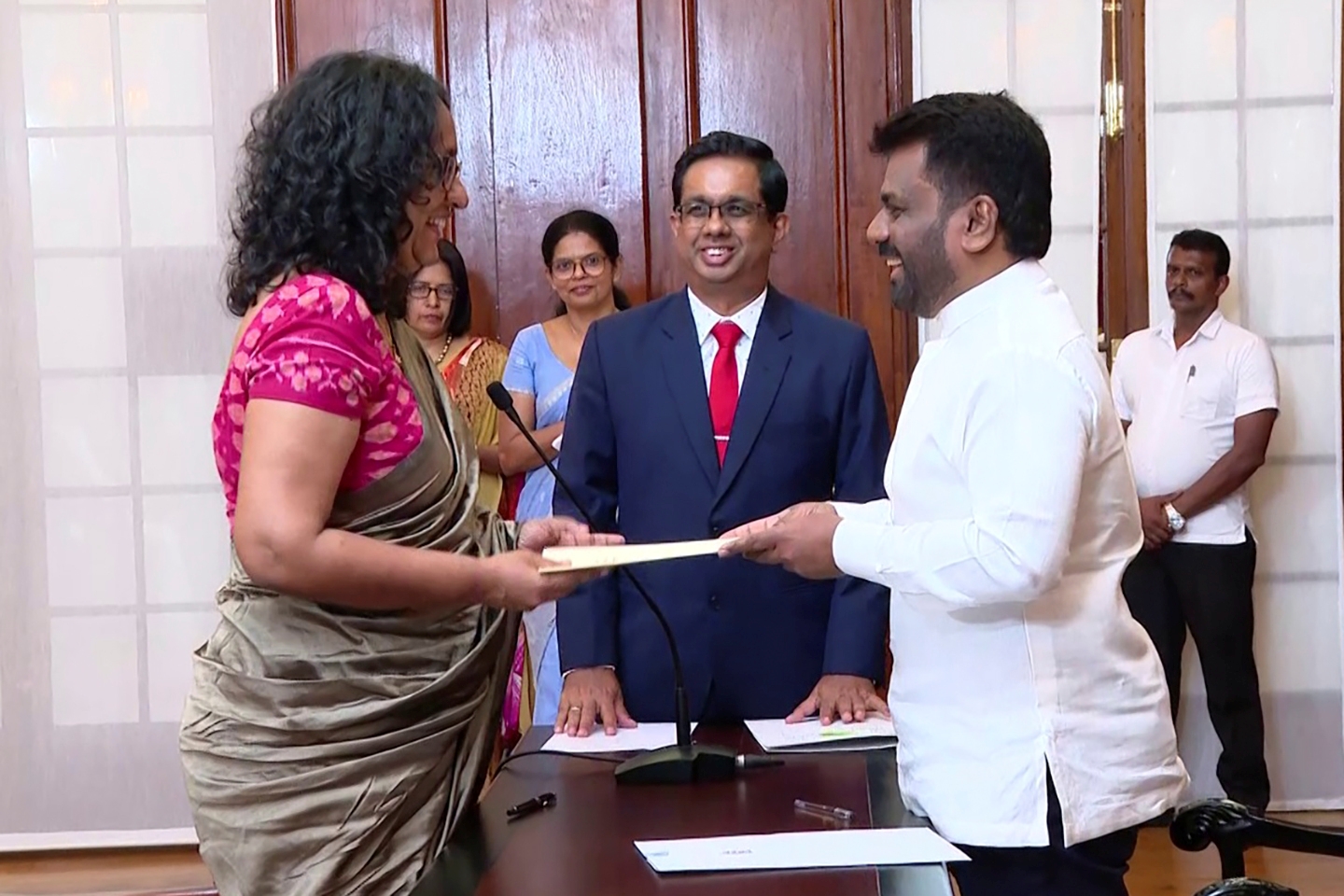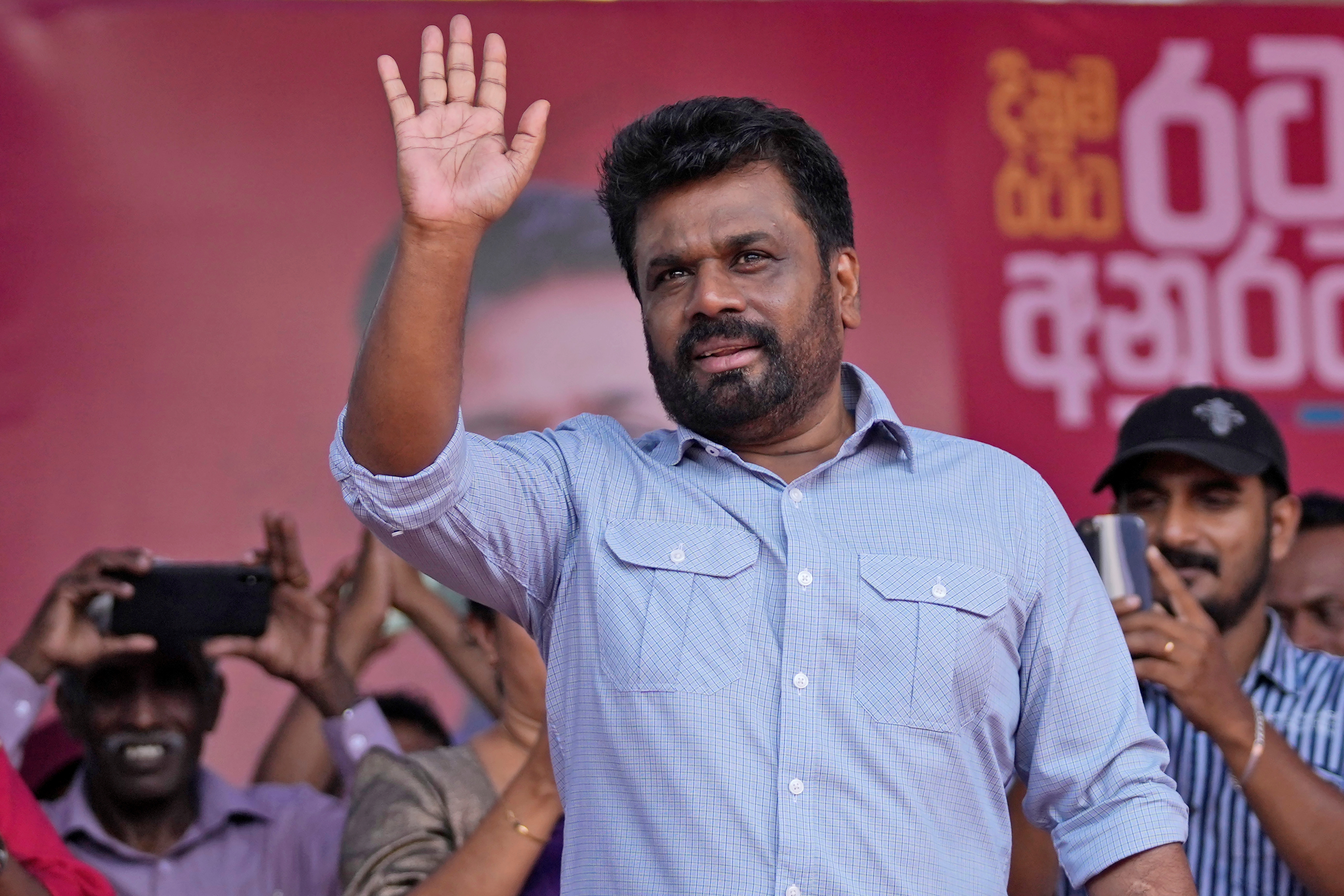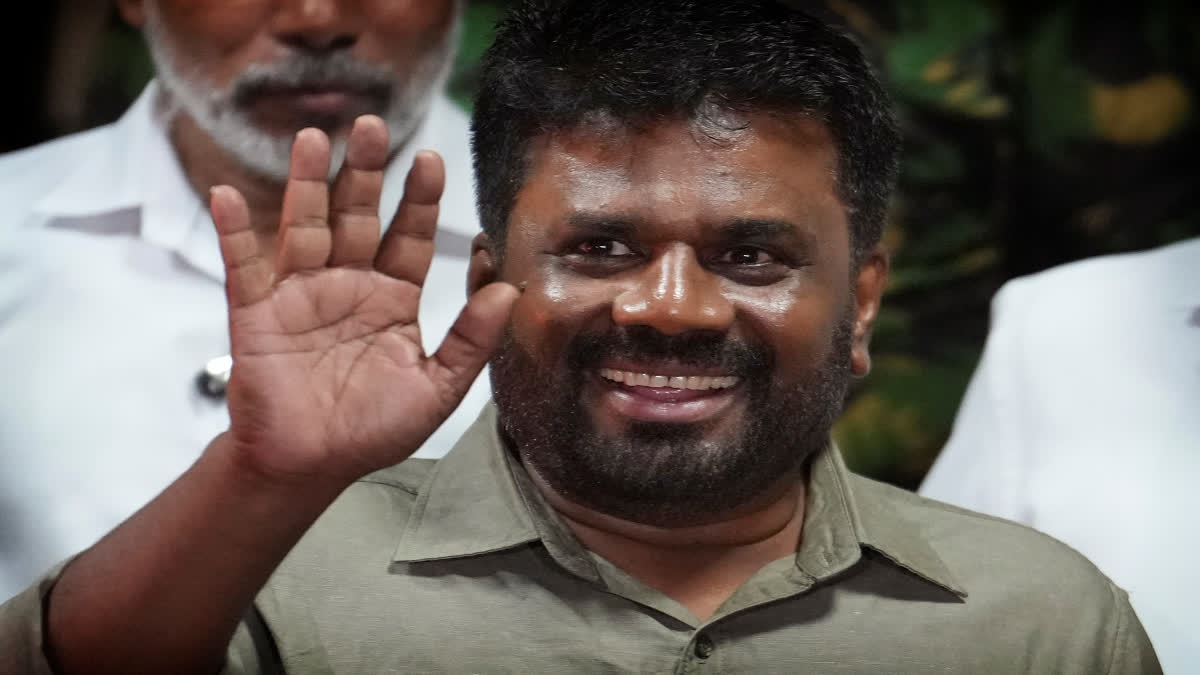New Delhi: When Anura Kumara Dissanayake took the oath of office on Monday, he officially became the ninth Executive President of Sri Lanka. But he is actually the 10th President of Sri Lanka. However, if the election manifesto of the National People's Power (NPP) alliance representing which he was elected the country's highest post is to go by, Dissanayake might well be Sri Lanka's last elected Executive President.
This became all the more evident from comments made by senior NPP leader and Member of Parliament Sunil Handunnetti in front of the media near the Presidential Secretariat on Monday when Dissanayake was sworn in.
"You have elected today this country's last executive president," Economynext.com quoted Handunnetti as saying. "There will be no more executive presidents henceforth. The president to abolish the executive president has been elected. We ask the people of the country to support that."
Handunnetti was reiterating the promise made in the NPP alliance presidential election manifesto which clearly states that a new constitution will be drafted and passed through a referendum with necessary changes, if there any, after going through a public discourse.
The following point was made very clear on page 109 of the manifesto: "Abolishing the executive presidency and appointing a president, without executive powers, by the parliament."
When did the executive presidency come into existence in Sri Lanka?
Ceylon (as Sri Lanka was known then) gained independence from the British Empire in 1948. Under the Soulbury Constitution which consisted of the Ceylon Independence Act of 1947 and The Ceylon (Constitution and Independence) Orders in Council 1947, Ceylon became a constitutional monarchy with a Westminster parliamentary form of government. The monarch of Ceylon (the British monarch) served as the head of state, represented by the governor-general with the Prime Minister serving as the head of government. The governor-general replaced the position of the Governor of British Ceylon, who had previously exercised executive control over the entire island since 1815.
In 1972, a new republican constitution was adopted, which apart from changing the name of the country from Ceylon to Sri Lanka, declared the island nation a parliamentary republic with a president as head of state. The president was a largely ceremonial figure; real power remained vested in the Prime Minister. William Gopallawa who served as the last Governor-General of Ceylon, became the first President of Sri Lanka.

In 1978, the Second Amendment to the Constitution replaced the Westminster system with a more semi-presidential system. The presidency became an executive post based closely on the French model, and was now both head of state and head of government, with a longer term and independent from Parliament. The president was the commander-in-chief of the armed forces, head of the cabinet of ministers, and has the power to dissolve and call a parliament. The Prime Minister would serve as both an assistant and the deputy to the president and also the president’s successor.
Why was it deemed necessary to create an executive presidency?
The executive presidency was introduced under President JR Jayewardene of the United National Party (UNP) in 1978. It was intended to stabilise the country's governance by ensuring continuity in executive leadership, particularly in times of crisis, and to promote a more centralised decision-making process to address the economic and political challenges of the 1970s.
Jayewardene believed the system would allow for quicker decision-making, avoiding the legislative deadlock and factionalism often associated with parliamentary systems. This was especially pertinent as Sri Lanka faced economic difficulties and the early signs of ethnic conflict between the Sinhalese and the Tamil minorities.
Ranasinghe Premadasa, Dingiri Banda Wijetunga, Chandrika Kumaratunga, Mahinda Rajapaksa, Maithripala Sirisena, Gotabaya Rajapaksa, Ranil Wickremesinghe and now Dissanayake have since succeeded Jayewardene as executive presidents.
So, why is it now deemed necessary to abolish the executive presidency?
The concentration of power in one individual has often led to accusations of authoritarianism. Multiple presidents have been criticised for overstepping democratic norms, controlling media, repressing opposition, and stifling dissent. This centralisation of power has led to concerns about the undermining of democratic institutions.
The power to dissolve parliament and the ability to bypass it with emergency decrees have reduced the effectiveness of Sri Lanka’s legislative branch. The executive presidency diminishes the role of parliament in checks and balances, making it harder to hold the president accountable.
With immense power comes the ability to appoint allies and family members to key positions, leading to charges of nepotism and corruption. Many presidents have been accused of using their positions to reward loyalists and shield themselves from legal scrutiny.
The system has been criticised for exacerbating Sri Lanka’s ethnic divisions, particularly during the Sri Lankan Civil War (1983–2009). The executive powers were often used to implement harsh military and security measures, which fueled tensions between the Sinhalese majority and the Tamil minority.
The president’s ability to appoint judges and control judicial matters has been seen as a threat to the judiciary’s independence. This has raised concerns over the impartiality of the legal system.
Many believe that abolishing the executive presidency would restore the primacy of parliament and allow for a more balanced distribution of power between the executive, legislative, and judicial branches.
Without the legal immunities provided to the president, it is argued that there would be more transparency and accountability in governance. Reforms could limit the president’s ability to act without oversight or legal repercussions.

Have there been attempts to curb the executive president’s powers?
The 17th Constitutional Amendment introduced in 2001 reduced certain powers of the president, in particular in regard to the appointment of the upper judiciary and independent commissions such as the election commission or the bribery and corruption commission.
In 2010, the highly controversial 18th Amendment to the Constitution was introduced in order to remove the two-term limit for the presidency. The 18th Amendment allowed the incumbent president to serve multiple terms as well as increase their power by replacing the broader constitutional council with a limited parliamentary council. This amendment was introduced by then President Mahinda Rajapaksa and he later went on to run for a third term of presidency in 2015, wherein he was defeated by Maithripala Sirisena.
One of the most significant amendments aimed at reducing presidential powers was the 19th Amendment, passed under then President Sirisena, in 2015. This amendment reduced the president’s term from six years to five, restored a two-term limit for presidents, and transferred some executive powers back to parliament and independent commissions. It also limited the president’s ability to dissolve parliament and increased the independence of key institutions.
However, in 2020, under then President Gotabaya Rajapaksa, the 20th Amendment reversed many of the 19th Amendment’s provisions, restoring the president’s executive powers and removing term limits, fueling concerns over authoritarianism.
In 2022, the country caved into a severe economic crisis, and as result, mass anti-government protests erupted across Sri Lanka. The protesters demanded that then-incumbent President Gotabaya Rajapaksa and his government should step down. The protestors also demanded amendments to the constitution of Sri Lanka and to reduce the powers of the president. After Gotabaya Rajapaksa's resignation, Prime Minister Ranil Wickremesinghe was elected President by the parliament.
In October 2022, the 21st Constitutional Amendment was introduced as a plan to empower the parliament over the executive president and curbs some of the powers of the president. Under the 21st Amendment, the president, cabinet of ministers and the national council are all held accountable to the parliament. Fifteen committees and oversight committees are also accountable to parliament. One of the key provisions in the 21st Amendment is disqualifying dual citizens from contesting in elections in Sri Lanka.
Now, with Dissanayake being elected as the new President of Sri Lanka, it remains to be seen whether the executive presidency is done away with altogether.



